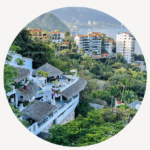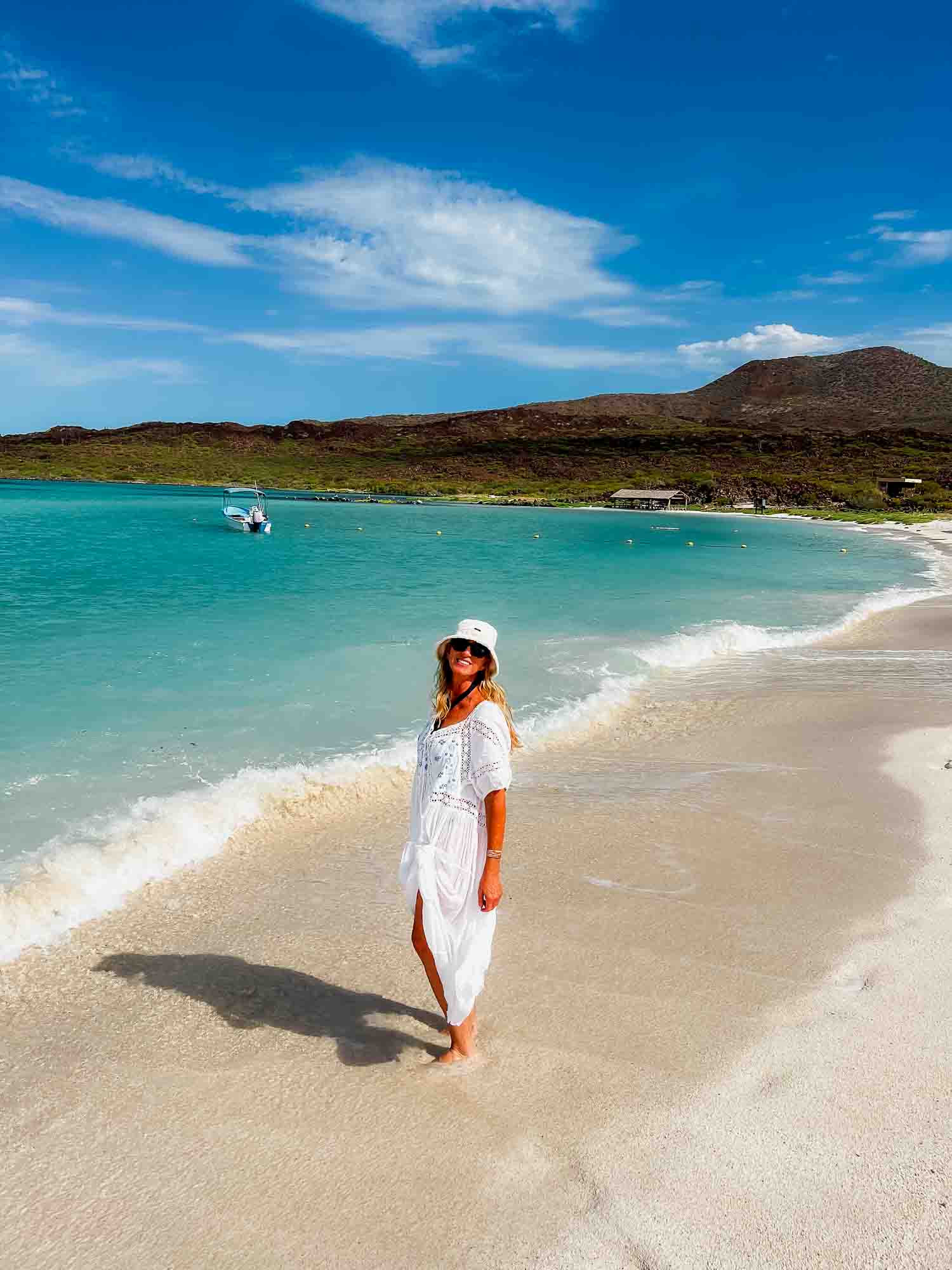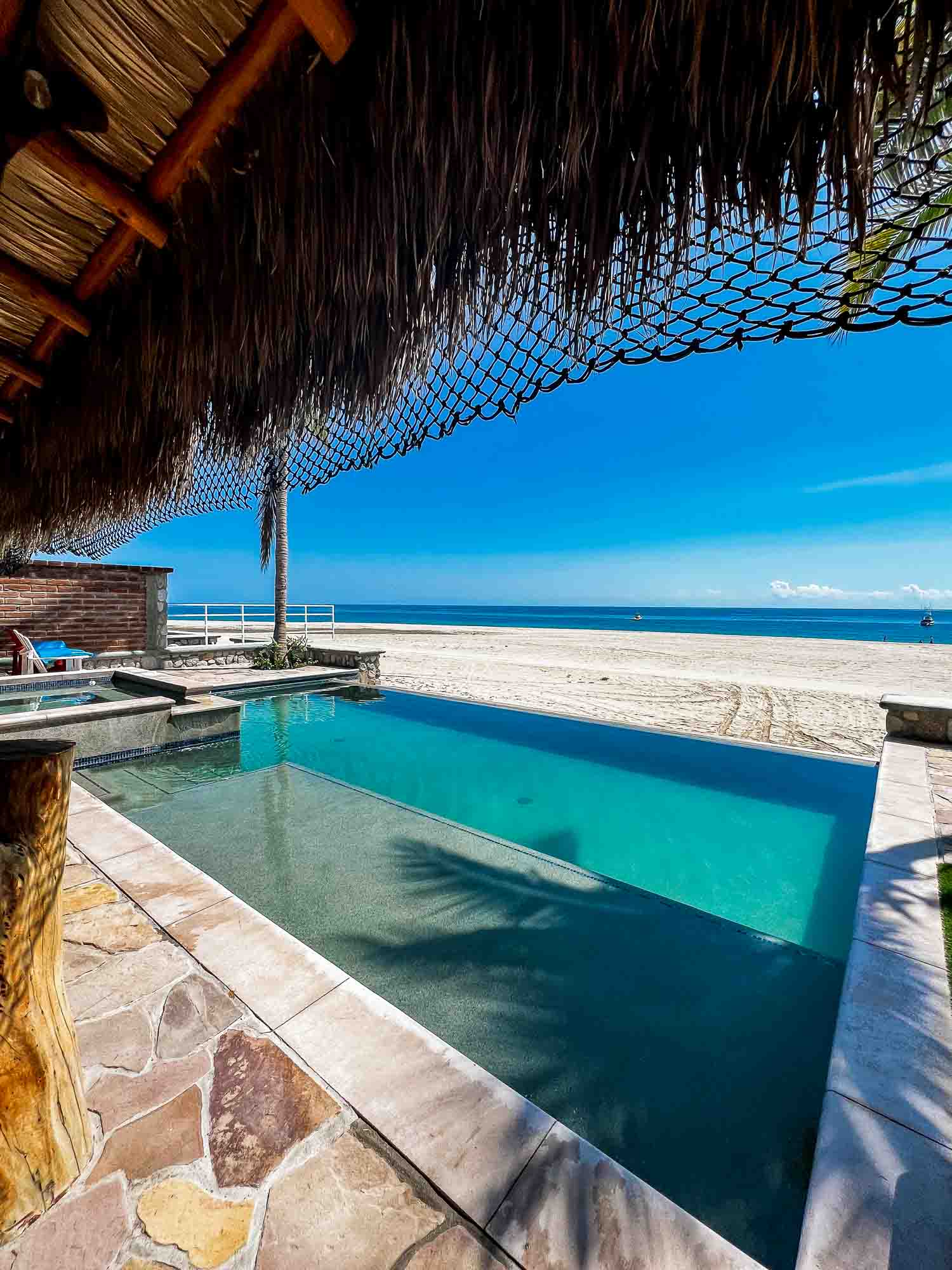

Tulum Travel Guide
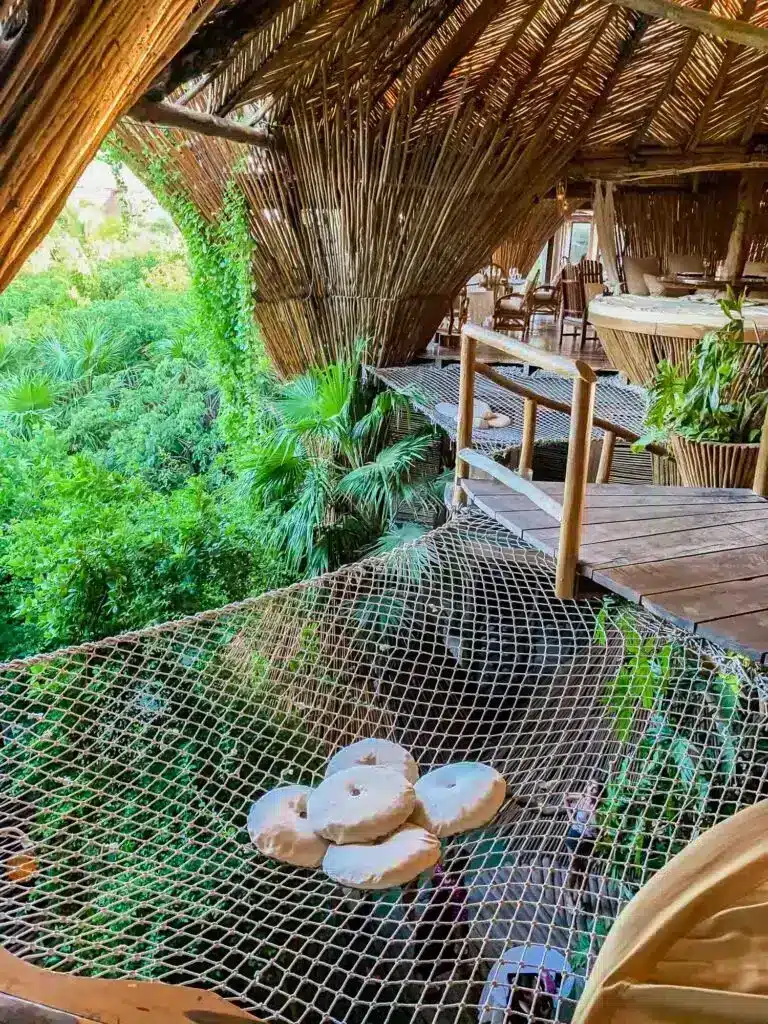
In this Tulum Travel Guide, Discover the allure of Tulum, a captivating tropical haven situated along the picturesque Riviera Maya in Mexico.
This enchanting destination seamlessly melds ancient history with modern experiences. The remnants of the ancient Mayan civilization coexist harmoniously with present-day offerings such as yoga retreats, vibrant shopping scenes, delectable restaurants. Tulum truly encapsulates a unique blend of the timeless and the contemporary.
Navigating the town of Tulum

Tulum is a small town in the state of Quintana Roo on the Yucatan Peninsula in Mexico. Tulum is a relatively small town in terms of population and geographic size; however it is broken into three sections and all called “Tulum,” so it is a bit confusing at first. Here is what to expect:
Tulum Pueblo (El Centro)
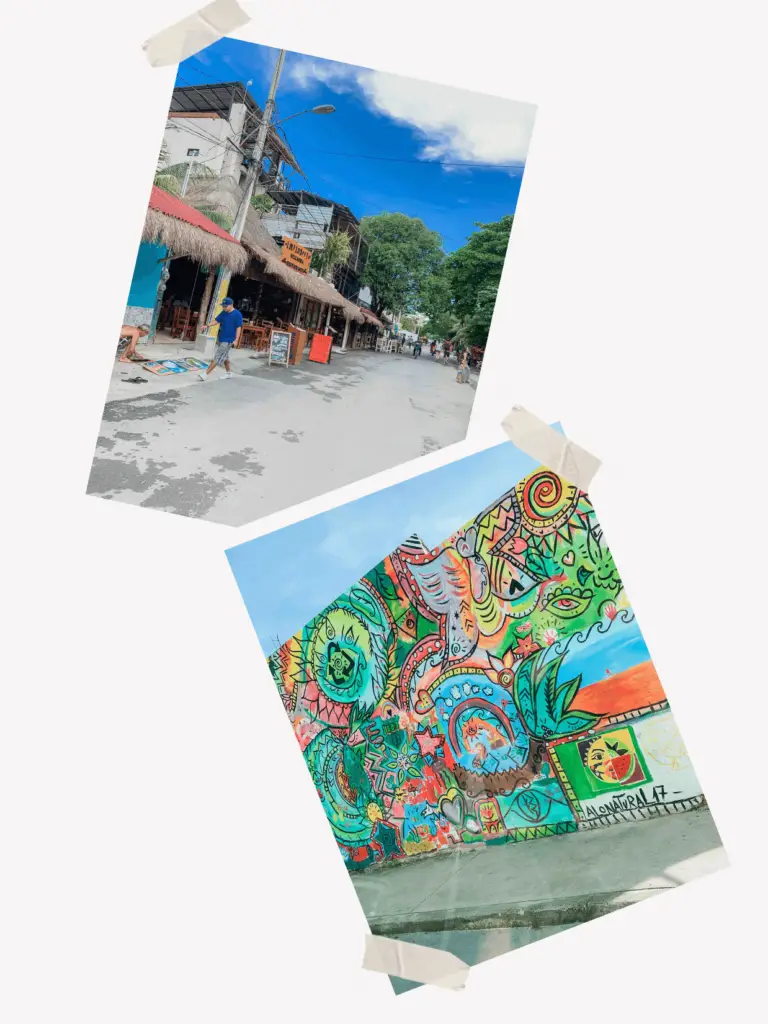
Tulum Pueblo is the heart of the town, where locals reside and conduct their daily activities. Here you’ll find grocery stores, markets, banks, pharmacies, and a variety of local businesses. This area is the authentic Mexican way of life. Visitors can immerse themselves in the local culture by exploring traditional eateries, amazing street tacos, Tulum beer, and shopping for souvenirs in the local markets. It’s an excellent place to experience the town’s vibrant and lively atmosphere.
Tulum Beach (Tulum Hotel Zone)
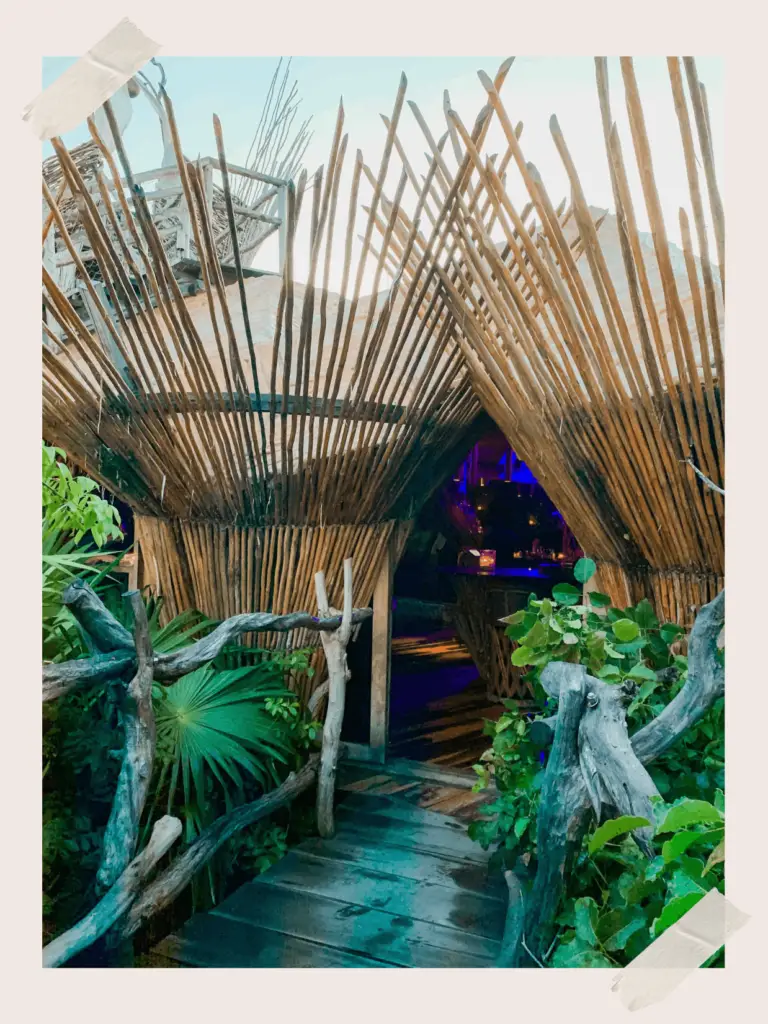
Tulum Beach, also known as the Tulum Hotel Zone, is considered an uber-hip, trendy, and artsy town in Mexico. It is a vibrant area located a short drive from Tulum Pueblo. This zone stretches along the coastline and features an array of upscale resorts, boutique hotels, beach clubs, and restaurants. It’s where visitors flock to enjoy the beautiful sandy beaches, crystal-clear waters, and stunning beachfront accommodations. Tulum Beach is popular for its laid-back, bohemian vibe and is a hub for wellness retreats, yoga classes, and beachfront dining. But be aware, this area is a hot spot for celebrities, and you can expect Western pricing. I call it “Booshie Way.” It truly is an amazing and beautiful street of the most interesting, unique and beautiful hotels and restaurants. This Tulum Travel Guide spends a lot of time exploring this section. There is so much to do!
Tulum Ruins
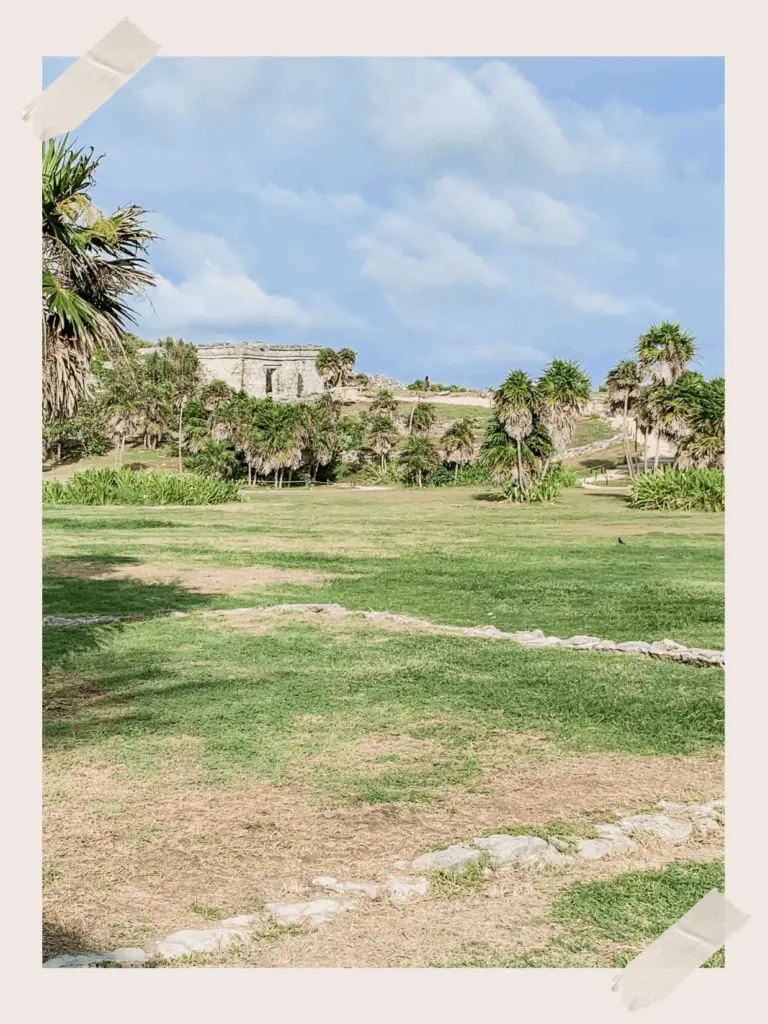
The Tulum Ruins are a historical and archaeological site located north of both Tulum Pueblo and Tulum Beach. This ancient Mayan city is perched on cliffs overlooking the Caribbean Sea, offering spectacular views. It’s a significant attraction showcasing well-preserved Mayan architecture, temples, and artifacts.
What to do in Tulum
Visit the Tulum Ruins
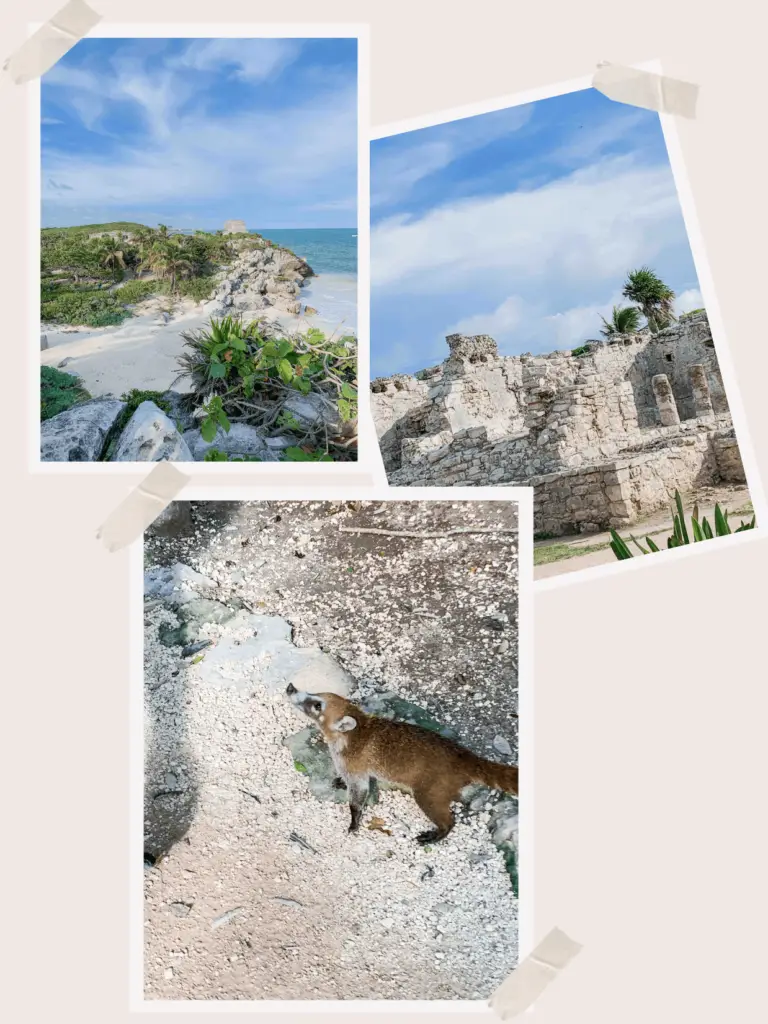

The Tulum ruins, also known as the Tulum Archaeological Site, are a captivating ancient Mayan city located on the eastern coast of the Yucatán Peninsula in Mexico. The sites and location are beautiful. Plus their is an added benefit to visiting the ruins, the animal interactions! Iguanas and white-nosed coatis are excellent tour guides!
Visit the Tulum Ruins - Historical Significance
Tulum was one of the last cities inhabited and built by the Maya, serving as a significant coastal trading post. It thrived during the 13th to 15th centuries.
Visit the Tulum Ruins - Location and Setting
Perched on 12-meter high cliffs along the Caribbean coastline, the ruins provide stunning panoramic views of the turquoise sea. The strategic location made it an essential port for trade and commerce.
Visit the Tulum Ruins - Architecture
The Tulum ruins showcase classic Mayan architecture, characterized by well-preserved structures, temples, and a large defensive wall. The buildings are relatively modest in size compared to other Mayan cities.
Visit the Tulum Ruins - Key Structures
- El Castillo: The most iconic structure, a pyramid-like temple perched on a cliff, served both religious and astronomical purposes.
- Templo Dios del Viento: Temple dedicated to the Mayan wind god. Its strategic positioning allows the sea breeze to flow through it.
- Temple of the Descending God: Known for a sculpture depicting a descending figure with a headdress, possibly representing the setting sun.
Visit the Tulum Hotel Zone
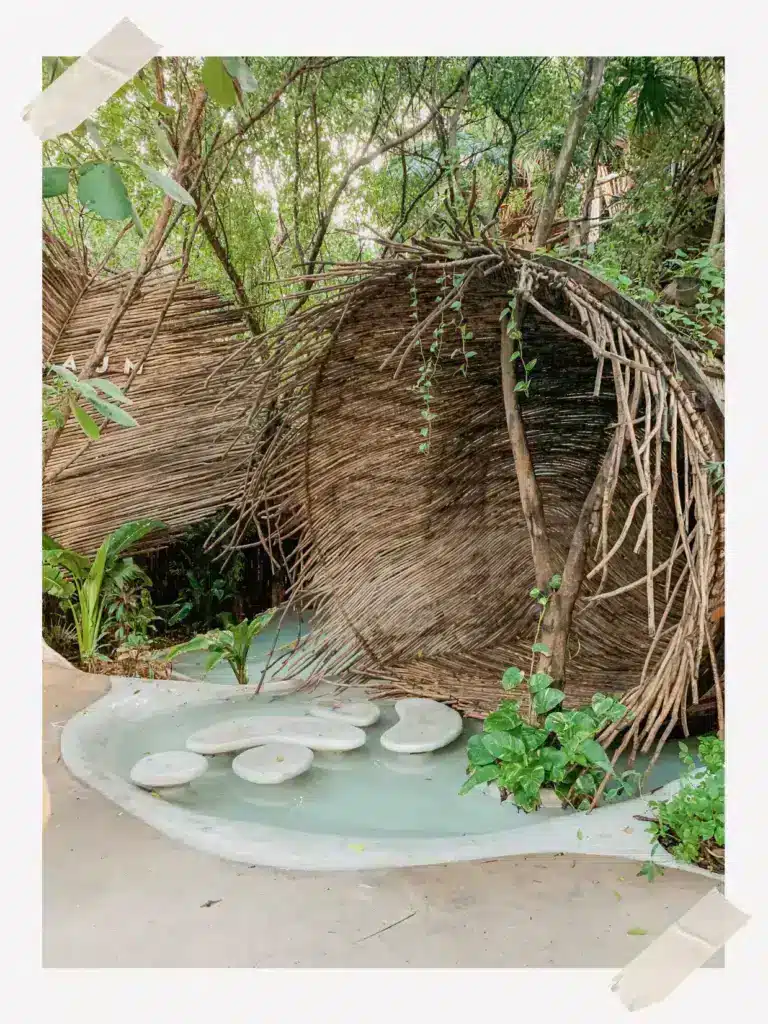
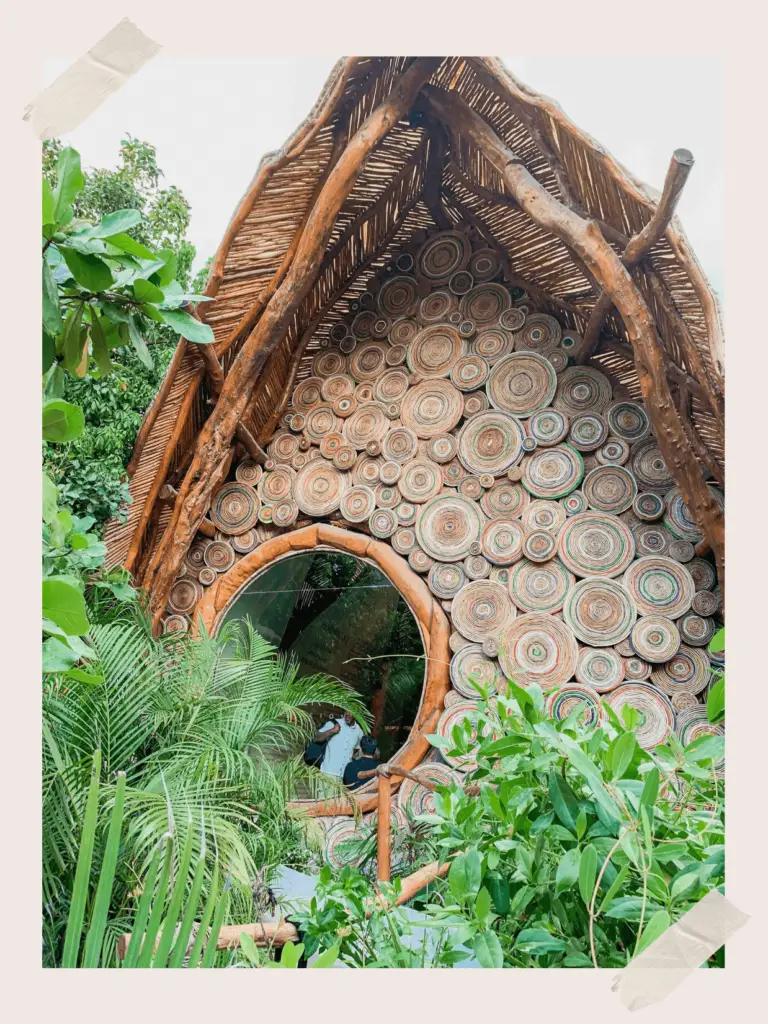
Tulum’s Hotel Zone, or “Booshie Way,” as I like to call it, is an ultra-stylish and artistic enclave. It is more than a place; it’s an experience. It’s a fusion of luxury, nature, and culture that will leave you spellbound. The Hotel Zone is a strip of coastline with upscale resorts, boutique hotels, and eco-chic lodgings, each offering a super unique slice of paradise.
Hotel Zone Beaches
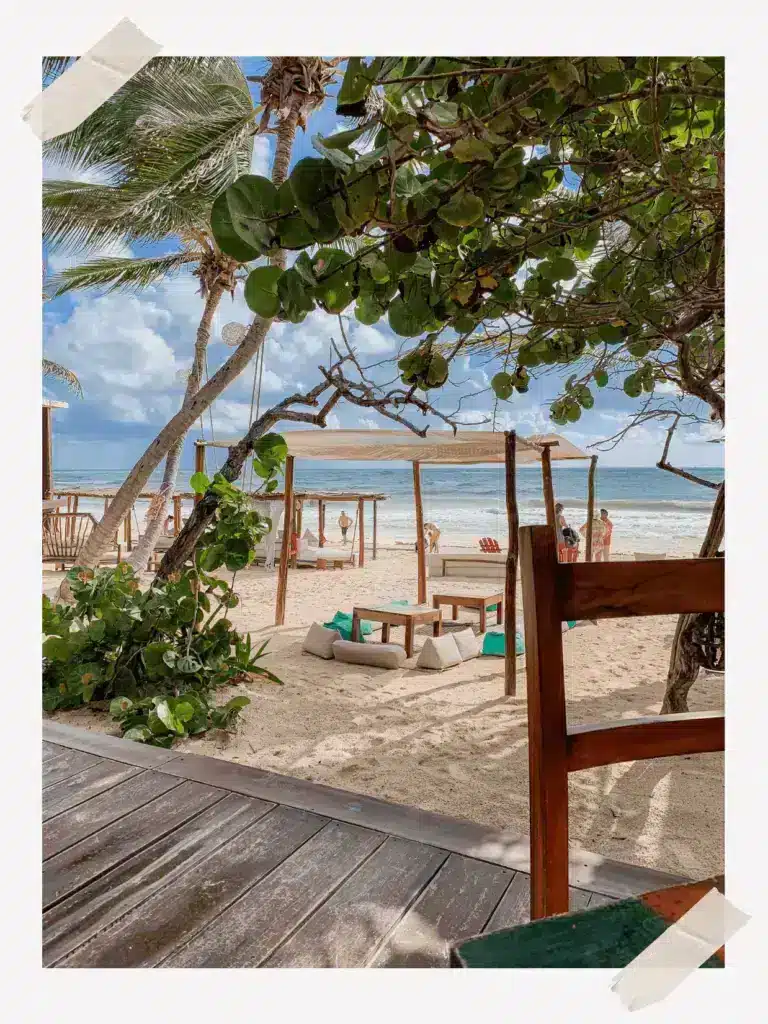
The main attraction is undoubtedly the beaches. We were staying in the most amazing beachfront house, but we kept finding ourselves in a cabana on the beach on Hotel Zone. The beaches here are postcard-perfect, fringed with swaying palm trees and dotted with cozy cabanas and hammocks.
I found it interesting that most of the beaches in Tulum are not free beaches. We had to pay to stay. But we were ok with the cabana and someone bringing us drinks all day. It was a wonderful experience. We enjoyed the beach at La Zebra. We had such great service, we went back several days in a row.

Hotel Zone Yoga and Wellness
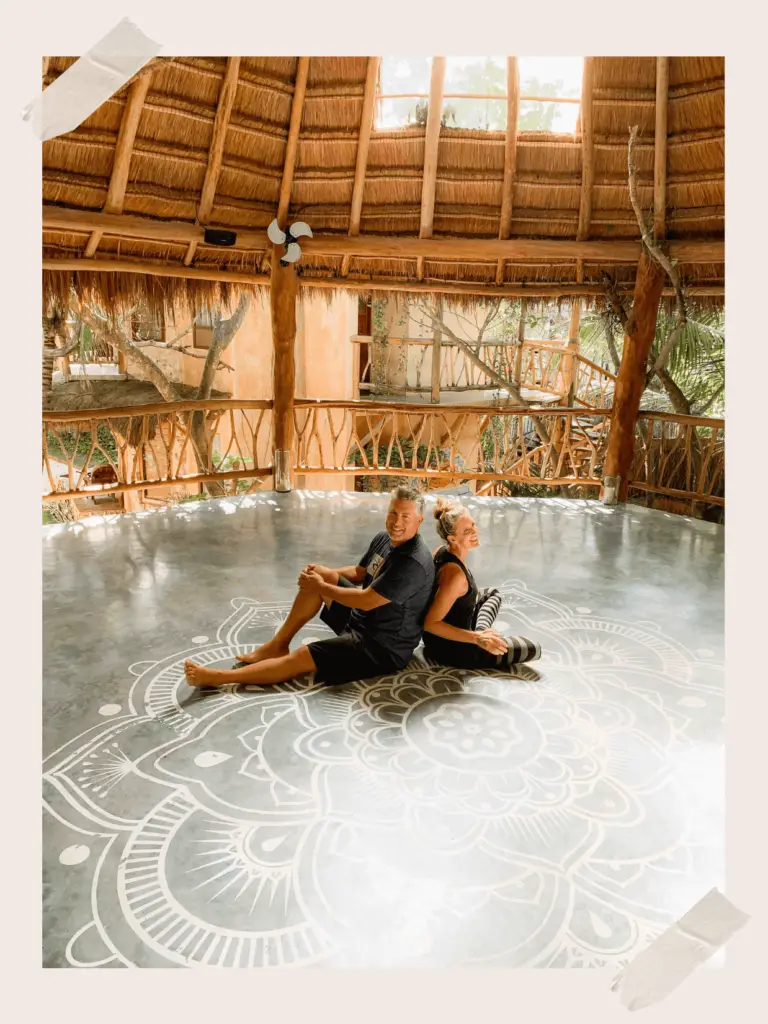
Yoga enthusiasts will find their haven in Tulum’s Hotel Zone. Many hotels and beach clubs offer yoga classes, often with a backdrop of the turquoise sea. The serene and peaceful atmosphere sets the ideal stage for yoga and meditation, allowing you to connect with yourself and nature in a profound way. We took yoga classes every day. We followed a German Yoga Instructor each day to different hotels. It was brilliant. We loved her practice, and it allowed us to experience the ambiance in each location. To date this has been my most rewarding yoga experience.
Hotel Zone Dining
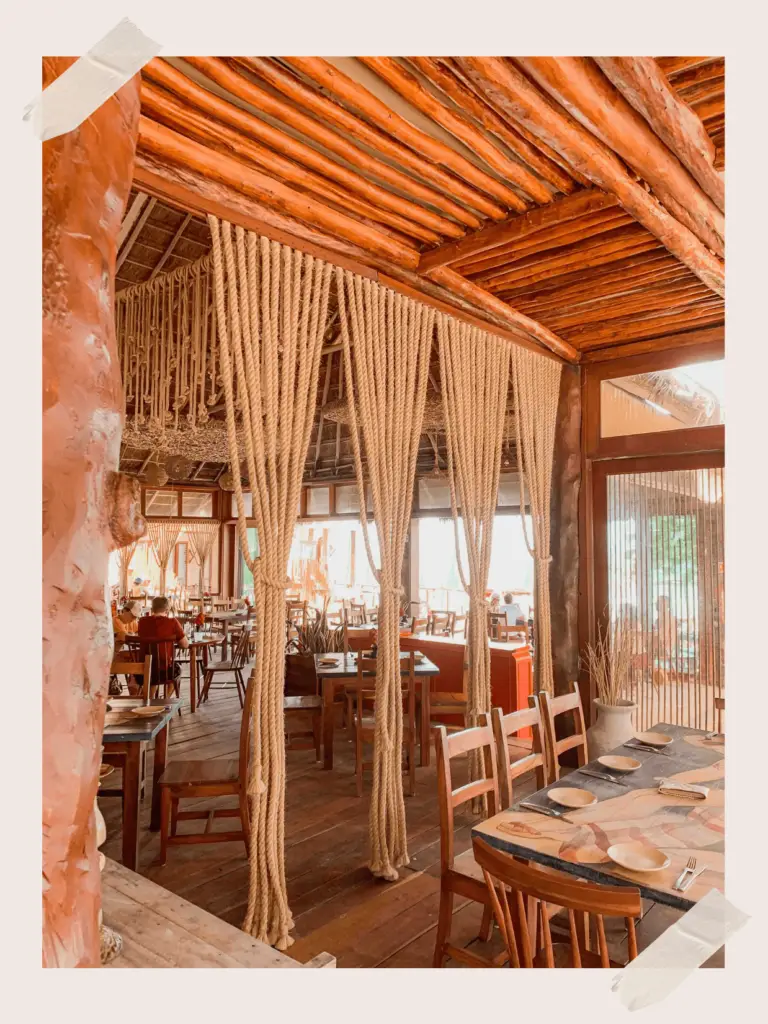
Tulum’s culinary scene is unbelievable. The Hotel Zone hosts a variety of restaurants that serve a fusion of international and local cuisines. From sophisticated dining to beachfront taco stands, you can savor a diverse array of flavors. Seafood, fresh tropical fruits, and traditional Mexican dishes are the stars of the show.
Beachfront Dining
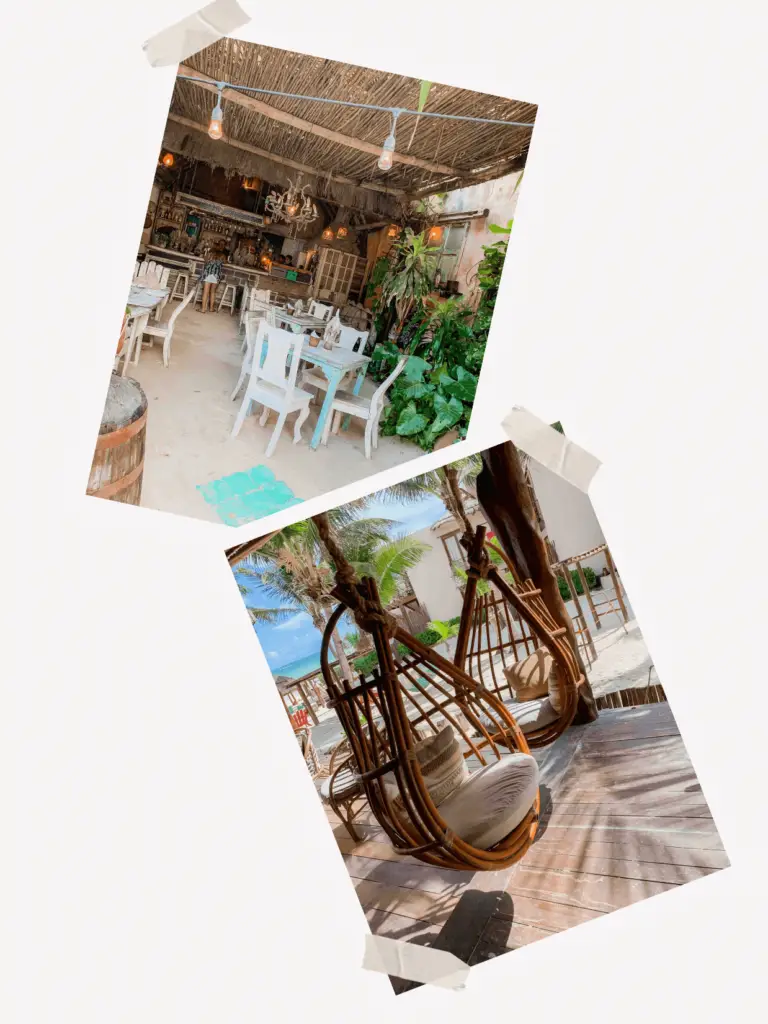
Dining with the sand beneath your toes and the sea as your backdrop is an an experience. Beachfront restaurants and lounges offer not just delicious food but a sensory journey. We did most of our beachfront dining at breakfast and saved the evening meals for the treetop canopies.
TreeTop Dining


In the heart of Tulum’s Hotel Zone lies a dining experience like no other—an opportunity to dine amidst the jungle canopy. Tree top dining in Tulum is a surreal adventure, offering an enchanting blend of gastronomy and nature. We both dined and had drinks in the canopies. Tulum is know for their mezcal drinks. They are delicious. There are so many dining opportunities in Tulum. I didn’t want to spend all our experiences in the Hotel Zone, but I couldn’t get enough of the canopy experience. One of our favorite places to dine was at Kin Toh. What an experience.
Visit the SFER IK Museum
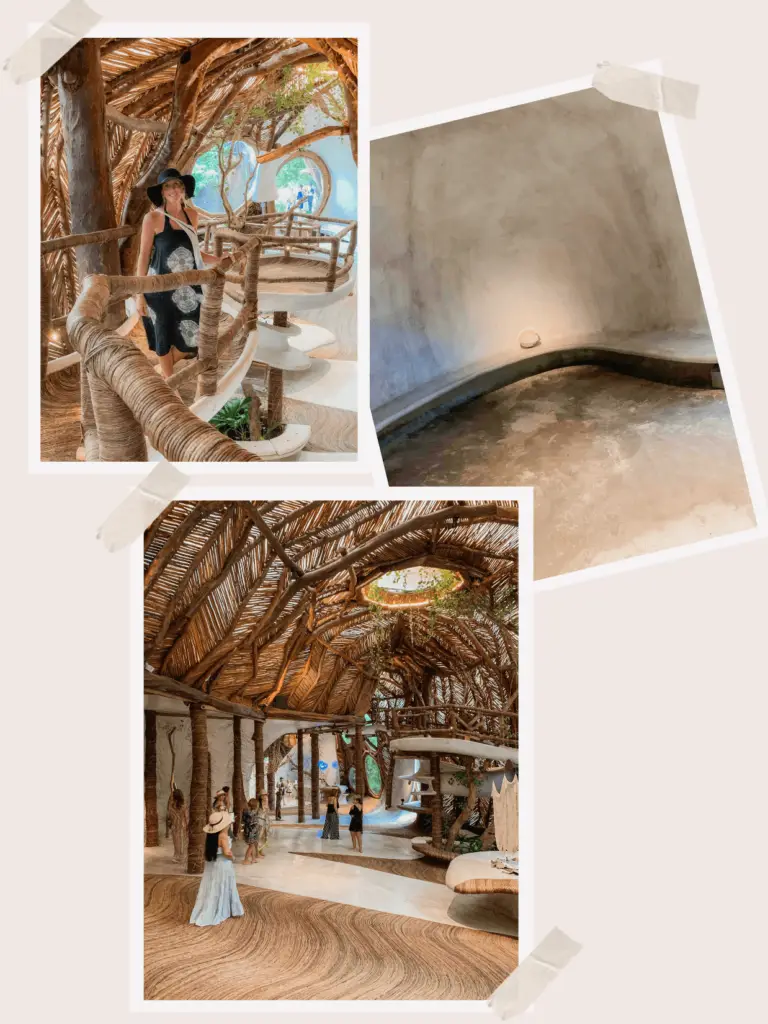
SFER is an unconventional exhibition hall that is rewriting the rules. SFER IK is not your typical art space. It was conceived as a space where artists could come together, fostering a creative cross-pollination of ideas inspired by both their fellow artists and the breathtaking natural surroundings.
Crafted from locally sourced wood and cement, SFER IK defies convention. Its walls are a canvas for nature, adorned with plants emerging from circular openings that connect to the world beyond. This interdisciplinary haven is nothing short of enchanting, providing a magical backdrop for artistic exploration and collaboration.
Walking through SFER is nothing short of spectacular.
Dine and Shop in Tulum Pueblo
Tulum Pueblo Dining - Local Cuisine and Street Food
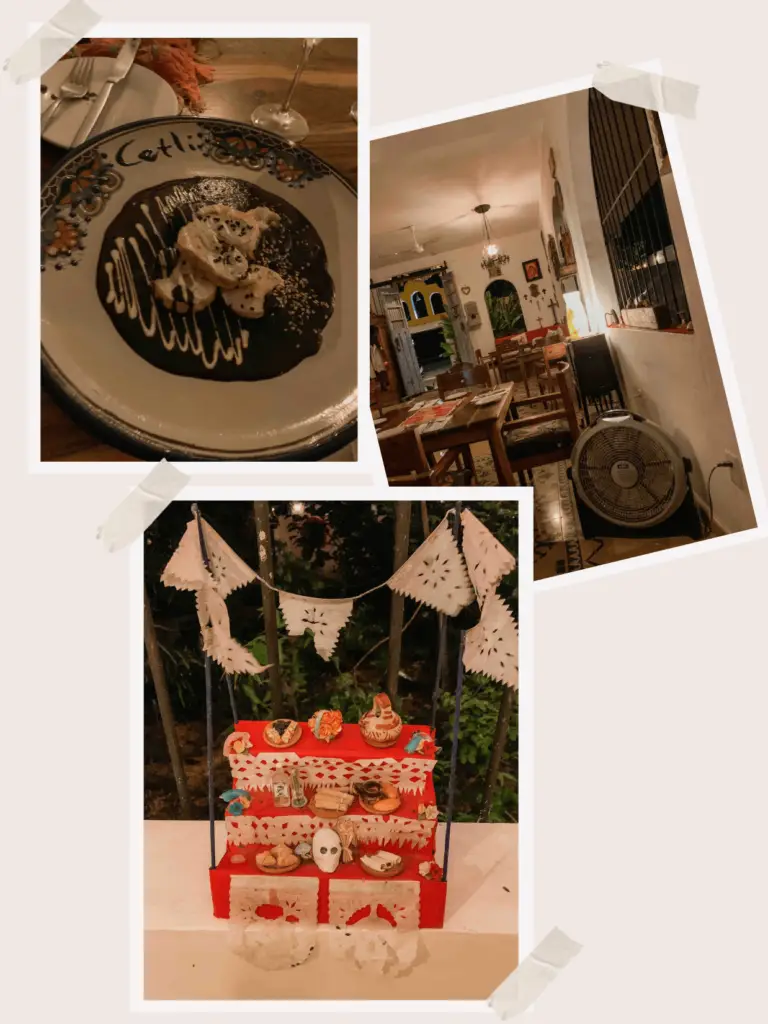
Tulum Pueblo is teeming with charming eateries and street vendors offering traditional Mexican cuisine. Here, you’ll find local flavors bursting with spices and aromas. From street tacos to tamales, the options are endless.
Must-Try Street Eats
- Tacos al Pastor: Marinated pork cooked on a vertical spit and typically served with pineapple, onion, and cilantro. The flavors are a true fiesta for your taste buds.
- Elote: Grilled corn on the cob slathered with mayo, cotija cheese, chili powder, and lime juice. It’s a popular and delightful street snack.
- Tamales: Steamed pockets of masa filled with various ingredients like meats, cheese, or chilies, wrapped in a corn husk.
Eclectic Dining Experience
Tulum Pueblo also embraces international flavors and eclectic dining experiences. You can find a fusion of tastes, from Italian to Japanese, crafted with a unique Tulum twist. These restaurants often incorporate locally sourced ingredients, giving you a taste of the region’s bounty.
Some of favorite dining experiences were at Cetli Restaurant @cetlitulum and Estancia Jujena @estancia.jujena.tulum.
Recommendations for Fusion Dining
- Hartwood: Renowned for its farm-to-table concept, utilizing locally sourced, organic ingredients to create a remarkable dining experience.
- Arca: Offering contemporary Mexican cuisine with a focus on sustainability and natural flavors. The ambiance is rustic and inviting.
The Cenote Experience
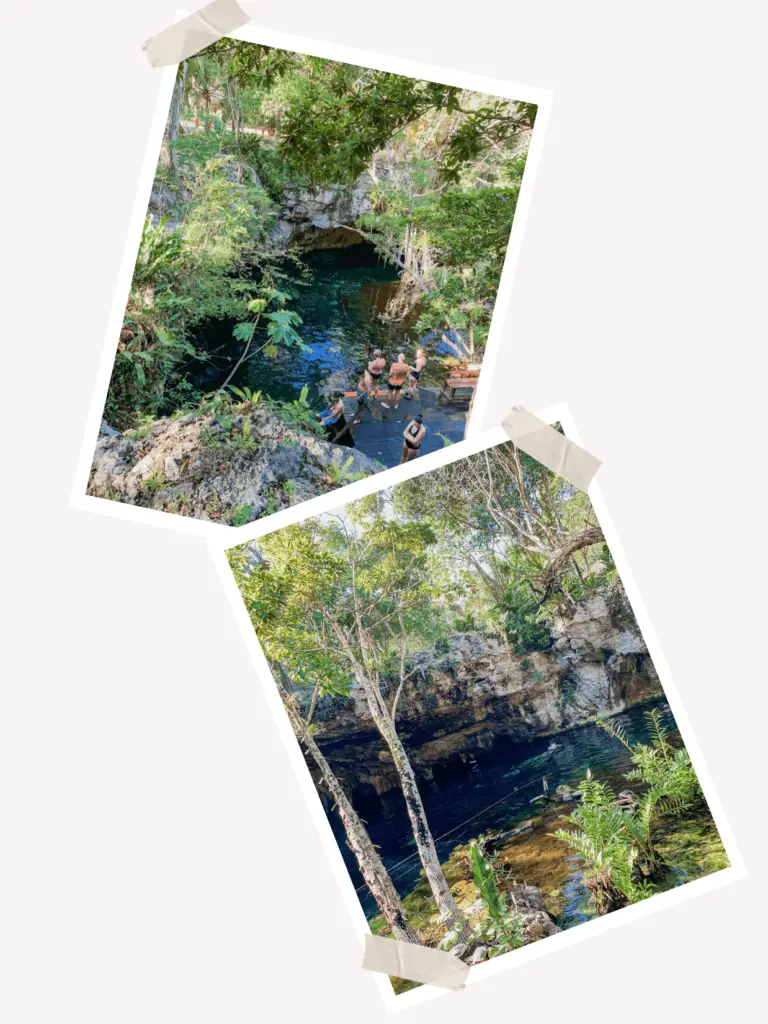
I had never heard of a cenote until I planned my visit to Tulum. Once I experienced one, I was addicted. Exploring the cenotes in Tulum is like stepping into a hidden realm. The crystal-clear waters, often adorned with vibrant aquatic plants, reflect the sunlight into mesmerizing hues. The water was chilly for me (I wore a spring wetsuit for a few of them), but my husband and friends thought the water was refreshing, offering an escape from the Mexican heat.
Click here for more of my cenote experiences within driving distance from Tulum.
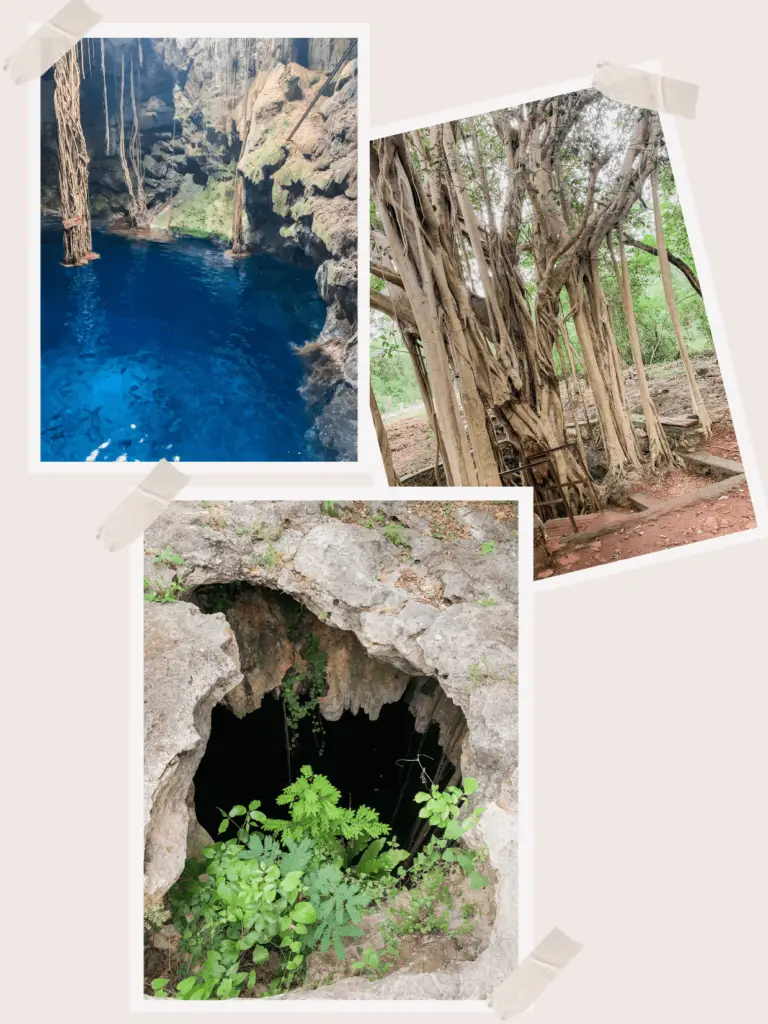
Types of Cenotes
In Tulum, you’ll encounter various types of cenotes:
- Open Cenotes: These are the most common and easily accessible. They have a visible water surface and often boast captivating vegetation and rock formations.
- Semi-Open Cenotes: These cenotes have a partially covered surface, offering a blend of sunlight and shadow. The feeling of being half under the sky and half in a cave is truly unique.
- Cave Cenotes: Completely enclosed in caves, these cenotes provide an adventurous underground swimming experience. The rock formations within the caves are awe-inspiring.
Must-Visit Cenotes
- Gran Cenote – This is the crown jewel among Tulum’s cenotes. It has clear, turquoise waters while stalactites and stalagmites adorn the underground formations, giving this cenote a mystical ambiance.
- Dos Ojos Cenote–Known as “Two Eyes Cenote,” this cenote is a favorite for divers. The name stems from the two connected sinkholes that resemble a pair of eyes. The intricate cave system offers an unparalleled diving experience.
- Cenote Sac Actun – Part of the world’s longest underwater cave system, Cenote Sac Actun is a true marvel for divers. It holds a mystical allure with its clear waters and hidden depths, inviting the adventurous to explore its secrets.
- Calavera Cenote – Also known as the “Temple of Doom,” Calavera Cenote offers a unique experience. Its three openings create an eerie skull-like appearance, adding to the intrigue. The cenote’s deep pools are perfect for a thrilling dive.
- Carwash (aka Aktun Ha) – Carwash was once used for washing cars, but now it’s used for swimming or cave diving.
- Casa Cenote – This cenote has a tunnel that leads to the ocean and is surrounded by mangroves.
Exploring the Cenotes
- Swimming and Snorkeling The cenotes in Tulum invite you to dive into their rejuvenating waters. Snorkeling allows you to witness the underwater beauty, including colorful fish and captivating limestone formations.
- Diving For certified divers, exploring the underwater caves and tunnels is an exhilarating adventure. The cenotes offer a surreal experience, unveiling the hidden treasures of the Mayan underworld.
- Cenote Tours Guided tours are available, providing informative and safe experiences. Local guides share the cenotes’ history, geological significance, and ensure a memorable and secure adventure.
- Respect and Conservation Preservation of these natural wonders is essential. Visitors are encouraged to respect the delicate ecosystems by avoiding touching or disturbing formations, using biodegradable sunscreen, and following designated paths.
Visit Chichen Itza
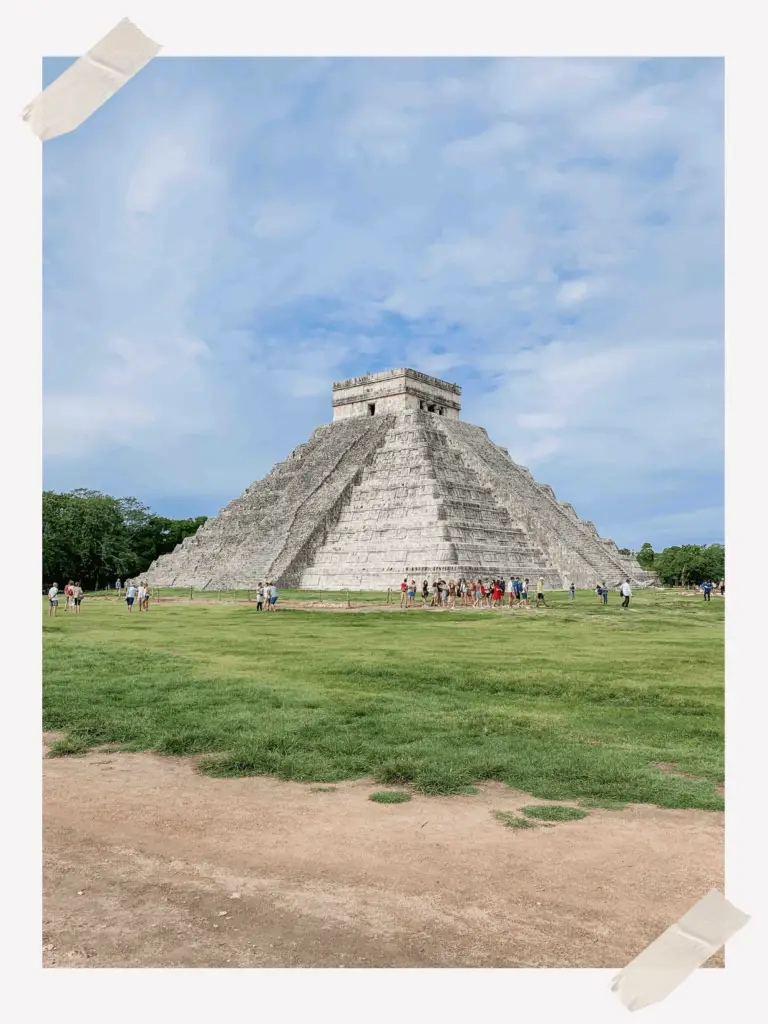
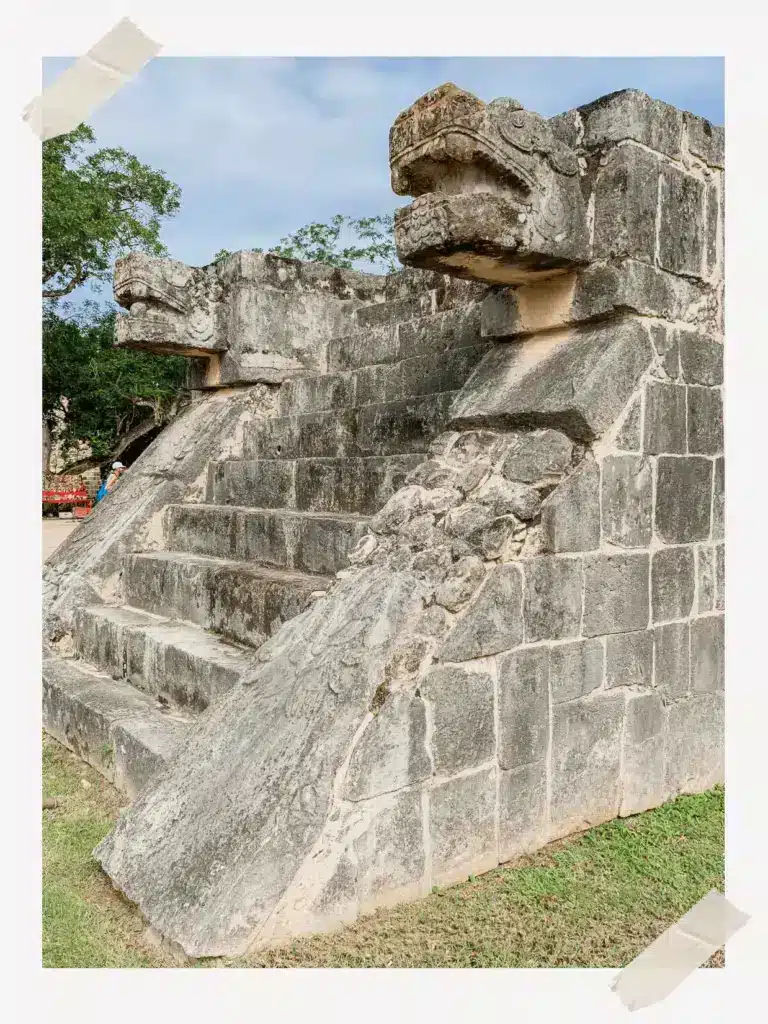
Drive or tour to Chichen Itza, it is worth the time. From Tulum to Chichen Itza is 185 kilometers (115 miles) and it takes a little over 2 hours to get there if you’re driving.
Chichen Itza, a UNESCO World Heritage Site, stands as a monumental testament to ancient Mayan civilization. It is steeped in history and mystique. This ruin site demonstrates the Mayans’ extraordinary architectural and astronomical capacity.
The iconic Kukulkan Pyramid, also known as El Castillo, astounds with its precise alignment to equinoxes, casting shadows that resemble a serpent’s slithering descent. You can also explore the Temple of the Warriors, the Great Ball Court, and the sacred Cenote Sagrado. It is worth the trip and worth paying for a tour. Our guide had so many rich and colorful stories to explain all that the Mayans had achieved and how the present day locals revere these grounds.
Tulum Travel Guide - Tulum's Colorful Murals
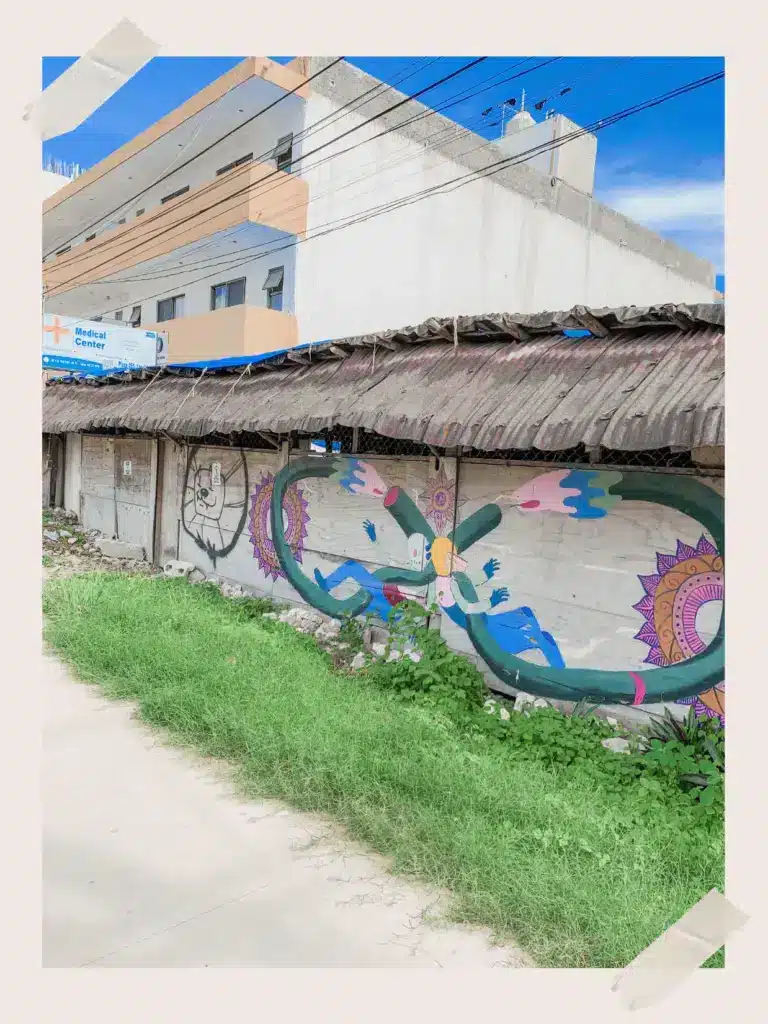
As you wander through the streets of Tulum Pueblo, you’ll encounter numerous murals adorning the walls of local businesses and homes. The town center is a treasure trove of street art, each piece telling a unique story. From vivid depictions of nature to thought-provoking abstract designs, the range is diverse and captivating. A prevalent theme in Tulum’s murals is environmental consciousness. Artists often use their creative prowess to advocate for sustainable practices and preservation of the environment, underlining the importance of protecting the natural beauty that Tulum is so renowned for.
Places to Stay in Tulum

We stayed in an amazing Airbnb near Tulum. It was a short drive to the Tulum ruins and Hotel Zone. It was perfect. It wasn’t as expensive as the Hotel Zone accommodations but was equally as beautiful with a private pool and beach. It was just spectacular. It was just a short walk to Cenote Manatí. We were able to order massages on our deck, take daily runs, swing in hammocks, walk to small piers and walk to nearby hotels and restaurants. It was the perfect experience to explore all that Tulum had to offer to help write this Tulum Travel Guide.

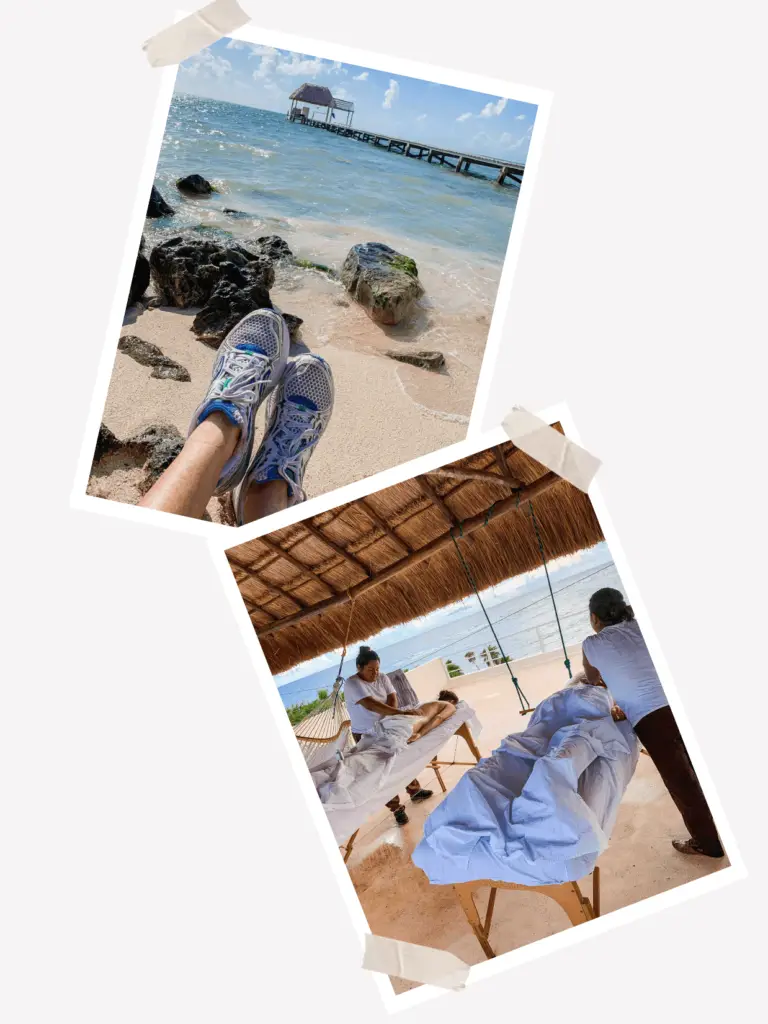
Tulum Travel Guide - Tulum Weather
The climate is tropical in Tulum. The summers are much rainier than the winters in Tulum.
- Hottest Month: August – 83 F
- Coldest Month: January – 74 F
- Most Rainy Days: September – 28 days
- Fewest Rainy days: February – 9.63 days
- Wettest Month – October
- Highest relative humidity: September – 82.53 %
- Lowest relative humidity: March – 72.02%
- Most Hours of Sunshine – July – 10.01 hours per day
- Least Hours of Sunshine – January – 7.25 hours per day
- Hurricane Season: June – November
Maximum temperature by Month:
- January – 78.8 F
- February – 80.2 F
- March – 81.6 F
- April – 83.4 F
- May – 84.8 F
- June – 84.6 F
- July – 86 F
- August – 86.5 F
- September – 85.5 F
- October – 83.6 F
- November – 81.2 F
- December – 79.9 F
The water temperature in Tulum (Caribbean Sea) is on an annual average at about 27.80°C | 82.04°F.
Tulum Travel Guide - How to get to Tulum
The closest Airports to Tulum are:
- Cozumel International Airport (CZM) 64.79km
- Cancún International Airport (CUN) 110.74km
- Chetumal International Airport (CTM) 212.80km
There are so many options for traveling to Tulum. I like to rent a car, but that may not be for you. Once you arrive in Tulum, you will need some form of transportation. We rarely drove our car around town, but we did ride bikes a lot.
There are shuttles, taxis, colectivos, and ADO buses that all travel to Tulum.
Tulum Travel Guide - Tips for Visiting Tulum
• Tulum grapples with occasional seaweed issues affecting its stunning beaches. Despite efforts by resorts, it’s an ongoing challenge.
• Tulum is expensive. Be prepared that this is not a traditional Mexican vacation.
• Planning a visit? Opt for November or December to escape the bustling crowds of January to March or the rainy spells from June to October.
• Internet connectivity in Tulum tends to be sluggish, so don’t rely on lightning-fast WiFi during your stay.
• Public beach options are limited; prepare to pay for access to the finest beaches usually through beach club entrances.
Do your part and give back. I always take a morning and clean up trash. The resorts keep the beaches super clean. But just around the corner it is not so clean. I believe the universe gives us so much and it takes a village to care of this beautiful planet.
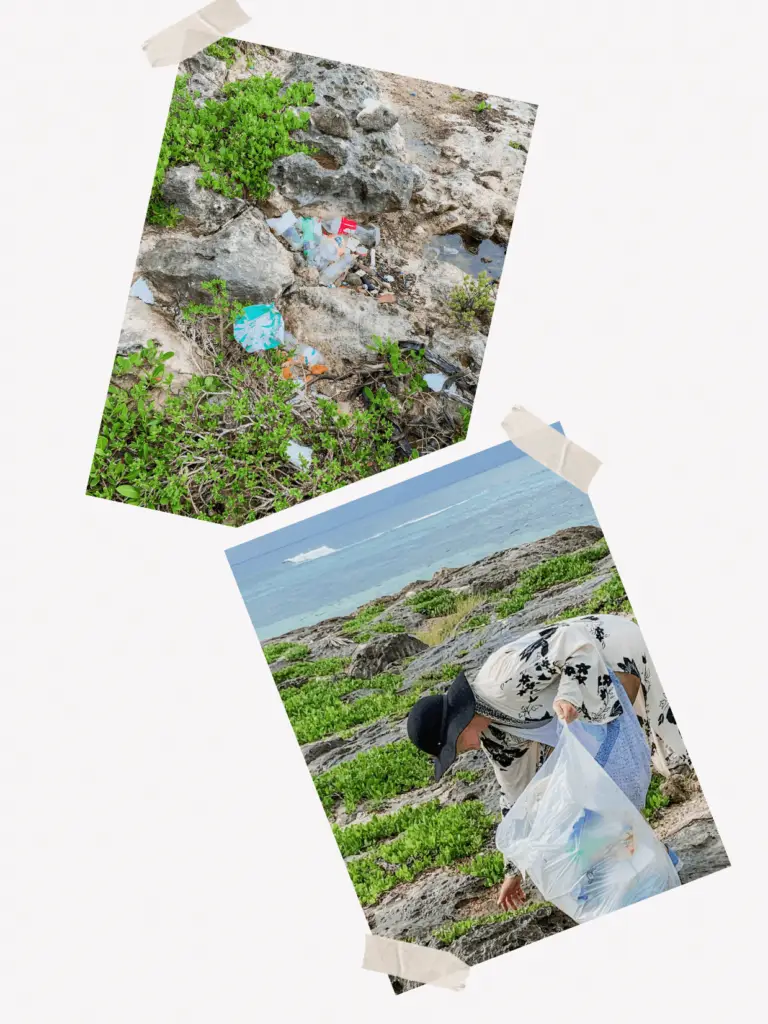
DISCOVER YOUR NEXT
Great Mexico Adventure







